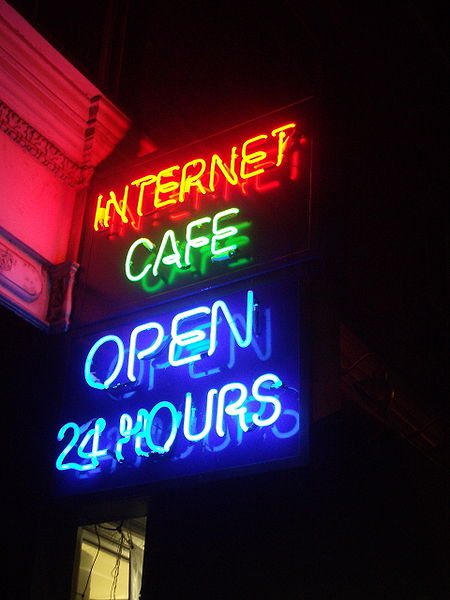
Signs have been around far longer than you might imagine, just not in quite the way you might be thinking. According to Wikipedia signage is defined as “the design or use of signs and symbols to communicate a message to a specific group…Signs are any kind of visual graphics created to display information to a particular audience.” Using this definition the first “signs” were cave drawings such as those done by the Egyptians and others to pass information on to future generations. These signs were a way of keeping track of history, but also providing useful information about potential danger as well as opportunities for food in the area.
Fast forward a few hundred years and other types of signs emerge. Religious groups began to use signs, such as the cross or the moon, to indicate religious affiliations. The first commercial signs are found in about this same time period with examples having been recovered from the Greek and Roman peoples. They used stone to create signboards to put on shop fronts as well as for officials to announce public events. In addition there have been examples recovered from the outside of shops where there were white areas which would then have symbols painted on them to indicate what type of building it was. Some of the earliest still exist today such as the red and white pole for the barber’s shop and the three balls which indicate a pawnbroker.

In the 14th century King Richard II of England made signage a law. He required shops to put up signs on their property with his legislations that stated “whosoever shall brew ale in the town with intention of selling it must hang out a sign, otherwise he shall forfeit his ale.” Given that no one wanted to forfeit their ale, signs became common. As time went on and more and more shops went up, the shop owners had to get more elaborate in their signage to differentiate themselves, thus we move in to the more modern versions of signs.
Many shop owners thought the answer was bigger signs, this became a hazard to the public as well as an eye sore, which is when government began to get involved with legislating the size and location for sign placement. In the 19th century painting of signboards became so popular that local artists were able to support themselves just from this type of work. In addition, some inventions came along that really helped the industry – gas lighting, the industrial printing press, and electricity.

The next major sign developments came in the early 1900’s. Lights began to be added to signs, initially just for businesses that operated after dark but eventually to nearly all signs. In the 1920’s came the invention of the neon sign. This provided signage that could be easily customized and highly visible. For many years neon signs became the standard. In addition, the creation and widespread adoption of the automobile led to the need for street signs and street safety signs at about this same time. From here plastics were introduced which allowed for large scale production of signs with the flexibility to make changes easily.
From there it was a quick jump to the sign industry of today which is estimated to be just over a $50 billion dollar a year industry. Now signs are available in any color, size, material, or shape you can imagine and can be displayed in hundreds of manners. Infinity Signs NW is a proud part of the history of the sign industry with our team’s creative energy helping to further advance signage and move it towards future development.
